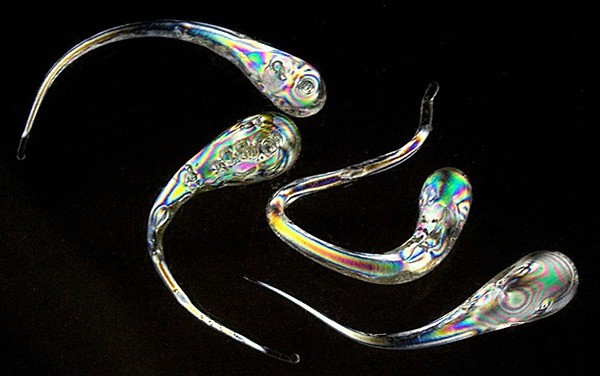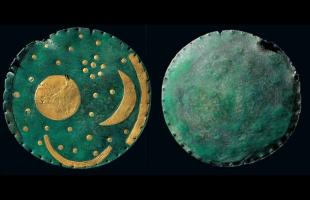The Batavian tears
They are glass objects whose origin is unknown and shrouded in mystery. They have the shape of tears, but glass tears which, as such, express neither sadness nor pain.


The Batavian tears are glass objects whose origin is unknown and shrouded in mystery. They have the shape of tears, but glass tears which, as such, express neither sadness nor pain. It seems that there are thirteen, a recurring number among the various mysteries. Their simplest description is: they are made up of a round part that ends with another longer and thinner one. Their most fascinating prerogative is that if these tears are hit with a hammer they can resist, but if their tail is broken or if they are subjected to even the slightest superficial scratch, they explode with a bang. This leads us to believe that their nature is quite particular and that the mysteries and legends born around them are justified precisely by these disturbing characteristics. The main material of these tears is glass, it therefore seems appropriate to outline the history, or at least the origins, of this very important material.
The birth of glass is shrouded in legend. The importance that such a material has had in the development of humankind's trade is undeniable. Among the numerous legends concerning the discovery of glass we can remember:
- It is said that many years ago a Phoenician ship found itself in the middle of a storm. The ship's commander then decided to move closer to the coast to shelter the ship from the waves. The crew and passengers (mostly Phoenician merchants) pulled the vessel onto the beach and then lit a fire to shelter from the cold of the approaching night. The fire they lit was surrounded by some stones (a technique still used to limit the flames) which contained sodium carbonate and sand. While everyone was around the fire, due to the high temperature developed by the flames, they noticed that a transparent liquid was dripping from the stones.
- it is also said that the discovery of glass occurred in the context of ceramic manufacturing;
- it is also said that it was born during the working of bronze and iron;
What is known for sure is that it is a material born from fire and as such it was also considered sacred. The Egyptians knew about it, glass beads were found in the tombs of some pharaohs.
Origins of Tears
According to what we have been able to learn about these tears, it seems that they are the result of glass processing carried out in the 18th century by skilled German glassmakers. Their fascination, however, led scholars - including numerous philosophers who saw esoteric meanings in tears - to try to develop various theories about their origin. In particular, Balathasar de Monconys (1661-1665), advisor to the Sun King, reports in some reports relating to his long trips to Paris and London, that he witnessed some experiments with such glass tears.
According to the historian Beckmann, these tears must have come from Stockholm, brought by a French ambassador to the Swedish court. In the years around 1656 there were also traces of such tears in Amsterdam.
Returning to London they were very popular and were known by the term Rupert's drops, from the name of Prince Rupert - nephew of Charles I - lover of the chemical arts. It is said that he was the first to introduce them into England around the year 1660.
As regards Italy, there is a trace of a letter which attested their presence, or at least their notoriety around the year 1665. The nobles of the time, including the Grand Duke of Tuscany Ferdinand II, owned some from Belgium and Holland. The Grand Duke, passionate about particular phenomena, commissioned the Italian scientist and poet, Francesco Redi, to conduct detailed research aimed at discovering the cause of that fascinating phenomenon. The scientist's studies, however, failed to shed full light on the subject.
How do you get Batavian Tears?
They are made of glass, it has been said. Despite the proverbial fragility of this material, the aspect of the extreme resistance of tears to strong traumas, but of the precariousness in the face of slight scratches was also highlighted.
This paradoxical characteristic is justified by the nature of the glass that makes up the tears. It is, in fact, tempered glass obtained through rapid cooling of the glass. For example by dropping such glass drops into very cold water.
This causes the external part to cool very quickly and before the internal part, producing a contraction of the external part on the internal one. This means that the outer skin is in tension due to the incompressibility of the inner core. Since the head of the tears is shaped like an egg, even a very strong blow given for example with a hammer, will not shatter the tear, because the effort it tends to be distributed around the external part. However, the slightest scratch generates a sort of chain reaction which, when suddenly released, the internal pressure produces a thunderous explosion.
According to some scientists it is possible, nowadays, to produce such tears in the laboratory. You need glass sticks to melt, a burner and a container with water to temper the glass. Once the burner has been fixed on the table, tilt it by approximately 45°, placing the container with the water under the vertical of the flame. Melt one end of the glass stick by passing it into the flame. As soon as it begins to drip, the drops melting in the water container will cool, giving rise to glass tears. Much attention must be paid during this operation, the tears, although they have solidified, could be very hot.
Conclusion
The only certain thing about these objects is that they are placed in an area where opposites seem to come together: they resist strong traumas, but not very light scratches. Don't they perhaps reflect the very nature of what they represent? Aren't tears the protagonists of moods related to profound pain or immense joy? And if this were only their meaning that has transcended the centuries: simply being tears that express the particularity of human feelings capable of reacting with the same manifestation to two totally opposite states of mind. Thus glass tears resist the force of powerful traumas, but not to the lightness of some scratches releasing a pressure and a noise that one cannot imagine from similar objects. Disruptive and sudden, therefore, like a cry, a cry of glass.























